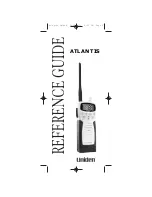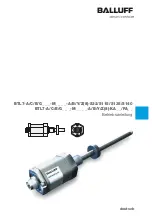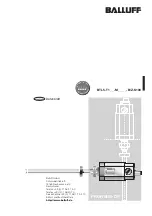
Honeywell
COMPONENT MAINTENANCE MANUAL
PART NUMBER 964-0452
I.B.1516A Page 101
Oct 25/02
23-12-01
TESTING AND FAULT ISOLATION
1. Introduction
This section contains information and instructions for testing and of the Transceiver. The proce-
dures and data are intended to assist in testing, isolation of faults to a module, and elimination of
faults by replacement of the modules.
The test procedures are designed to verify the operational readiness of the Transceiver, or, in the
event of faults, to determine the starting point of the fault isolation procedures. The Transceiver
requires testing for these reasons:
• Verification of Return-To-Service operational readiness prior to installing in the aircraft.
• Verification of operational readiness after repair.
• Trouble Shooting a Transceiver with unspecified faults.
The fault isolation procedures objective is to return a faulty Transceiver to operational readiness.
In the event of a nonspecified malfunction, or where faults stored in the memory of the Transceiv-
er fail to isolate the fault to a module, the test procedure must be performed to establish the be-
ginning point of the fault isolation process. In the case of faults precisely specified by the internal
fault routines, it may be advantageous to proceed directly to the appropriate test section or fault
isolation procedure. Refer to Fault Isolation, paragraph 6, for more information about fault isola-
tion procedures and data. After identification of a fault, repair of the fault, and verification of fault-
less operation through completion of the test procedure, the failure memory should be erased via
test interface.
2. Test Equipment
Test equipment is listed in Fig. 901. Refer to HF Data Radio Automated Test Equipment System
Description, Part No. 951-6732-001, for HF Data Radio ATE Calibration and Setup Information.
3. Test Conditions
Unless otherwise specified, all tests shall be performed under these laboratory conditions:
Temperature:
25
±
5
°
C (77
±
9
°
F)
Relative Humidity:
90% or less
Barometric Pressure:
30
±
2 in Hg
Altitude:
Normal
Ground
Vibration:
None
4. Power Requirements
A. A power source of 115
±
10VAC, 400
±
10Hz, 3-phase is required for the Transceiver.
B. A power source of 115VAC, 60Hz is required for ancillary test equipment.
5. Automated Test Equipment (ATE) Setup
This procedure ensures that the ATE software, including DOS, Windows, and ATEasy are in-
stalled, according to the respective user’s manuals.
A. Software Installation
Use this procedure to install a new release of the GSE software.
(1) Turn the ATE Personal Computer (PC) power ON for software installation.
(2) Launch MS Windows by typing
win
at the DOS prompt.
















































